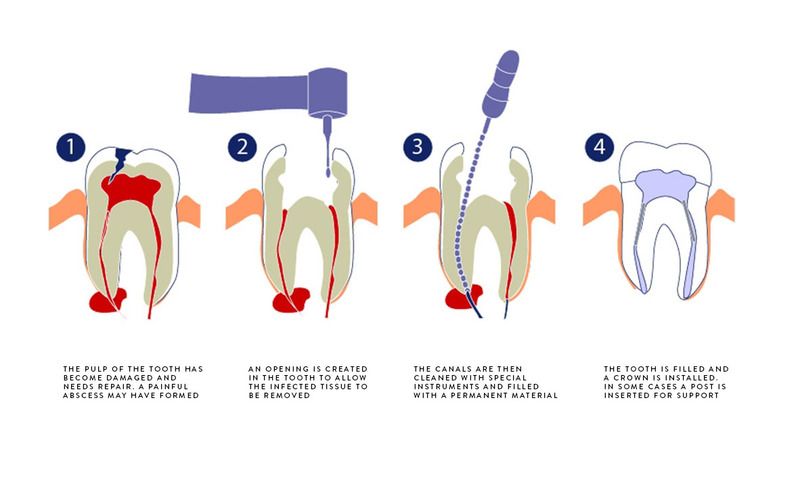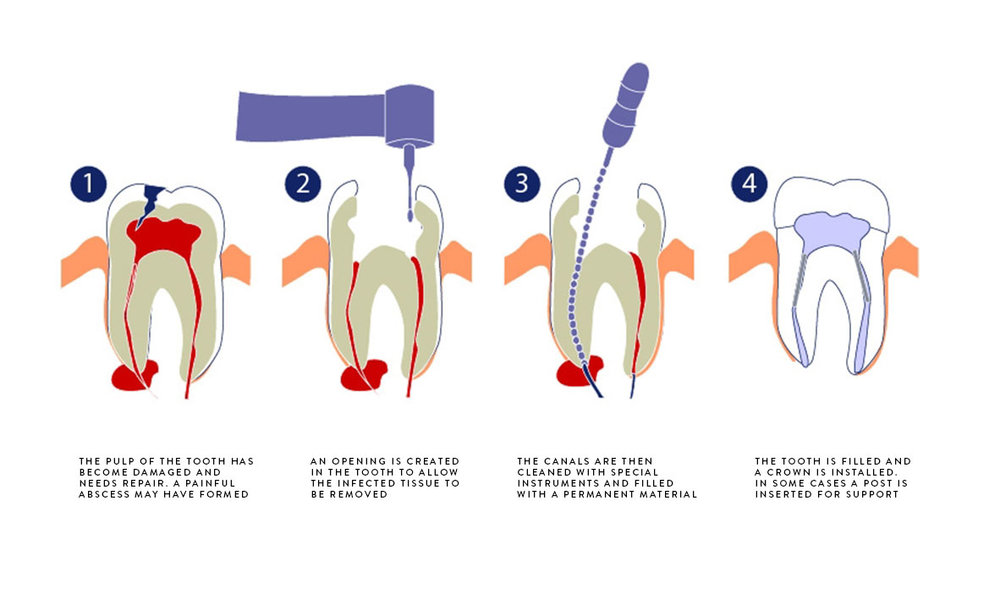
Imagine this: you’re minding your own business, enjoying a delicious meal or maybe even biting into a juicy apple, when suddenly, a sharp pain shoots through your tooth. Ouch! It feels like someone turned up the volume on a dental horror movie. That’s when you know it’s time to call in the emergency root canal squad.
This procedure involves removing the infected pulp, cleaning out the tooth, and sealing it up to prevent further damage. It’s like giving your tooth a much-needed spa day to save it from the brink of disaster. So, if you ever find yourself in a dental emergency, don’t panic! An emergency root canal might just be the hero you need to save your tooth from the clutches of pain.

Understanding Emergency Root Canal: What You Need to Know
An emergency root canal is a dental procedure performed to save a tooth that has been severely damaged or infected. It is called an emergency root canal because it is often done to alleviate intense pain or prevent the spread of infection. This procedure is typically performed by an endodontist, a dental specialist who focuses on treating the inner layers of the tooth, including the root canal.
The Process of an Emergency Root Canal
When you undergo an emergency root canal, the first step is to administer local anesthesia to numb the area around the affected tooth. This ensures that you are comfortable throughout the procedure. Once the anesthesia has taken effect, the endodontist will create a small access hole in the tooth to reach the infected or damaged pulp. The pulp, which contains nerves, blood vessels, and connective tissue, will be carefully removed.
After the infected pulp is removed, the root canal will be thoroughly cleaned and disinfected to remove any remaining bacteria. The endodontist will then shape the canals using specialized tools to ensure proper filling and sealing. In some cases, medication may be placed in the canals to combat any persistent infection. Finally, the canals will be filled with a biocompatible material called gutta-percha, and the access hole will be sealed with a temporary filling.
When is an Emergency Root Canal Necessary?
An emergency root canal is typically necessary when a tooth is infected or damaged to the point where it cannot be saved through other treatments, such as a filling or a dental crown. Common reasons for needing an emergency root canal include severe tooth decay, a cracked or fractured tooth, or an abscessed tooth. Additionally, if you experience intense pain or swelling in the affected tooth, it may be an indication that an emergency root canal is needed.
The Benefits of an Emergency Root Canal
- Preservation of Natural Tooth: Emergency root canals save your natural tooth, avoiding extraction and the need for replacements like implants or bridges.
- Maintains Natural Appearance: Preserving your natural tooth helps maintain a natural appearance and full functionality.
- Alleviates Pain and Discomfort: An emergency root canal relieves the pain and discomfort caused by an infected or damaged tooth, restoring oral health and overall well-being.
The Process of Recovery
- Tenderness and Sensitivity: After the procedure, you may experience tenderness or sensitivity, typically manageable with over-the-counter pain medications.
- Post-Procedure Instructions: Follow any provided instructions, such as avoiding chewing on the treated tooth until fully healed.
- Follow-Up Appointment: Schedule a follow-up to ensure the root canal’s success and proper healing of the tooth.
In conclusion, an emergency root canal is a dental procedure performed to save a severely damaged or infected tooth. It is a multi-step process that involves removing the infected pulp, cleaning and disinfecting the root canal, and filling and sealing the canals. An emergency root canal is necessary when other treatments cannot save the tooth and can offer numerous benefits, including preserving the natural tooth and alleviating pain. Recovery from an emergency root canal is typically straightforward, with any discomfort being managed with over-the-counter pain medications.
Key Takeaways: What is an Emergency Root Canal?
- An emergency root canal is a dental procedure performed to treat severe tooth pain or infection.
- It involves removing the infected pulp from the tooth’s root canal and filling it with a special material.
- Emergency root canals are usually necessary when a tooth is at risk of being lost or when there is a risk of the infection spreading.
- Common signs that may indicate the need for an emergency root canal include severe toothache, sensitivity to hot and cold, swelling, and pus around the tooth.
- If you experience any of these symptoms, it’s important to seek immediate dental care to prevent further complications.
Frequently Asked Questions
What causes the need for an emergency root canal?
There are several reasons why a person may require an emergency root canal. One common cause is severe tooth decay that has reached the innermost layer of the tooth, known as the pulp. When the pulp becomes infected or inflamed, it can cause intense pain and sensitivity. Trauma to the tooth, such as a fracture or injury, can also lead to the need for an emergency root canal. Additionally, untreated dental infections can spread to the tooth’s root, necessitating immediate treatment.
If you experience persistent toothache, sensitivity to hot or cold foods, swelling, or a pimple-like bump on the gum, it is important to seek emergency dental care to determine if an emergency root canal is necessary.
How is an emergency root canal performed?
An emergency root canal is a dental procedure that involves removing the infected or inflamed pulp from the tooth’s root canal system. The dentist will begin by numbing the area with a local anesthetic to ensure you are comfortable throughout the procedure. Once the tooth is numb, the dentist will create a small access hole in the tooth to reach the root canal.
Using specialized instruments, the dentist will carefully remove the damaged pulp and clean the root canal to remove any bacteria or infection. After cleaning and shaping the canal, the dentist will fill it with a rubber-like material called gutta-percha to seal it off. In some cases, a temporary filling may be placed on top of the tooth until a permanent restoration, such as a dental crown, can be placed.
Is an emergency root canal painful?
Many people associate root canals with pain, but in reality, the procedure itself is not painful. Before starting the root canal, the dentist will administer a local anesthetic to numb the area, ensuring that you do not feel any pain during the procedure. Some patients may experience some discomfort or sensitivity in the days following the root canal as the tooth heals, but this can typically be managed with over-the-counter pain relievers.
If you are anxious about the procedure, talk to your dentist about sedation options that can help you relax during the root canal. Remember, the goal of an emergency root canal is to alleviate pain and save the tooth from further damage or extraction.
How long does it take to recover from an emergency root canal?
The recovery time after an emergency root canal can vary depending on the individual and the extent of the infection or damage. In general, most people can expect some mild discomfort or sensitivity in the days following the procedure. This can be managed with over-the-counter pain relievers and should subside within a week or two.
It is important to follow any post-operative instructions provided by your dentist, such as avoiding hard or chewy foods and practicing good oral hygiene. In some cases, a follow-up appointment may be scheduled to ensure proper healing and to place a permanent restoration, such as a dental crown, on the treated tooth.
Can an emergency root canal save a tooth?
Yes, an emergency root canal can save a tooth that is infected or damaged. The purpose of the procedure is to remove the infected or inflamed pulp from the tooth’s root canal system, eliminating the source of infection and preserving the structure of the tooth. After the root canal, the tooth may require a dental crown or other restoration to provide additional strength and protection.
It is important to seek emergency dental care as soon as possible if you suspect you may need an emergency root canal. The sooner the infection or damage is addressed, the greater the chances of saving the tooth and avoiding extraction.
Root Canal Procedure Step by Step
Final Summary: Understanding Emergency Root Canals
An emergency root canal is a dental procedure performed to alleviate severe pain and save a tooth from extraction. It involves removing the infected pulp from the tooth’s root canal, cleaning and disinfecting the area, and sealing it to prevent further damage. While emergency root canals may sound daunting, they are a necessary solution for those experiencing intense tooth pain or swelling.
If you find yourself in need of an emergency root canal, don’t panic. This procedure is designed to alleviate pain and save your tooth, ultimately improving your oral health. By seeking prompt treatment from a qualified dentist, you can receive the necessary care and get back to smiling with confidence. Remember, your dental health is important, so don’t hesitate to reach out to a dental professional if you suspect an emergency root canal may be needed.
Call or Book appointment online
:Ace Dental Care Alpharetta office: 678-562-1555 - Book Now
Ace Dental Care Norcross office: 770-806-1255 - Book Now
Disclaimer
This blog post was generated by artificial intelligence. The content of this post may not be accurate or complete, and should not be relied upon as a substitute for professional advice. If you have any questions about the content of this post, please contact us.
We are constantly working to improve the accuracy and quality of our AI-generated content. However, there may still be errors or inaccuracies. We apologize for any inconvenience this may cause.





